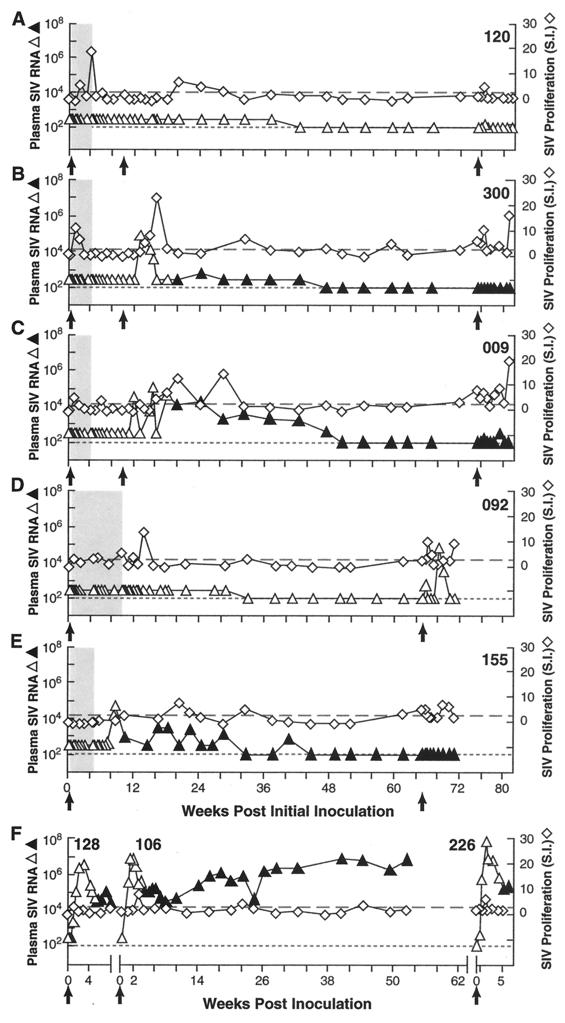FIG. 1.
Control of viremia, SIV lymphoproliferative responses, and resistance to early and late homologous SIV rechallenge. Plasma SIV RNA levels (triangles; open symbols prior to seroconversion, solid symbols after seroconversion [antibody status not evaluated at every time point]) and SIV-specific lymphoproliferative responses (open diamonds) are shown for macaques infected intravenously with 30 MID50 of SIVsmE660 and then transiently treated with tenofovir to block viral replication. Black arrows indicate initial inoculation and subsequent homologous rechallenges. (A to E) The interval of drug treatment is indicated by the shaded box and consisted of 28 days, beginning 24 h p.i. in Rh 120 (A), Rh 300 (B), and Rh 009 (C), or either 28 days (Rh 155) (D) or 63 days (Rh 092) (E) of treatment, beginning 72 h p.i. (F) Results for a representative, contemporaneously inoculated, SIV-naive, untreated control animal, for each separate challenge. Note the control of plasma viremia and increased lymphoproliferative responses for animals receiving early transient treatment relative to control animals. Dotted line indicates threshold sensitivity for RNA assay, 300 copy Eq/ml (early time points) or 100 copy Eq/ml (later time points); dashed line indicates threshold for positive lympoproliferative responses, stimulation index (S.I.) ≥ 2.5.

